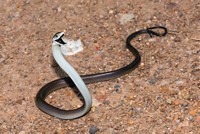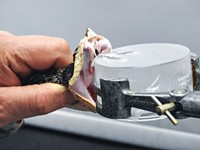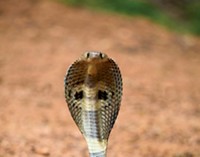Advertisement
Grab your lab coat. Let's get started
Welcome!
Welcome!
Create an account below to get 6 C&EN articles per month, receive newsletters and more - all free.
It seems this is your first time logging in online. Please enter the following information to continue.
As an ACS member you automatically get access to this site. All we need is few more details to create your reading experience.
Not you? Sign in with a different account.
Not you? Sign in with a different account.
ERROR 1
ERROR 1
ERROR 2
ERROR 2
ERROR 2
ERROR 2
ERROR 2
Password and Confirm password must match.
If you have an ACS member number, please enter it here so we can link this account to your membership. (optional)
ERROR 2
ACS values your privacy. By submitting your information, you are gaining access to C&EN and subscribing to our weekly newsletter. We use the information you provide to make your reading experience better, and we will never sell your data to third party members.
Biochemistry
Movers And Shakers
How an opossum protein may lead to a broad-spectrum snakebite treatment
San Jose State’s Claire Komives is testing an antivenom inspired by opossum biochemistry against various snake species to prevent deaths in the developing world
by Melissa Pandika, special to C&EN
May 30, 2018
| A version of this story appeared in
Volume 96, Issue 23
When Claire Komives, a chemical engineering professor at San Jose State University, began planning for a sabbatical in 2014, she had no clue what research project to pursue. But she knew she wanted to do it in India, a country that she fell in love with while completing a fellowship after earning her Ph.D. During her search for ideas, Komives stumbled on a news story about a protein in opossums that makes the animals immune to snakebites. A Texas-based researcher, Binie V. Lipps, had traced this immunity specifically to the protein’s first 10 or so amino acids, creating a peptide from that sequence and patenting her discovery in 1996.

During her sabbatical at the Indian Institute of Technology (IIT) Delhi, Komives picked up where Lipps left off. She developed a low-cost method for synthesizing the peptide. She engineered Escherichia coli to produce a long chain consisting of the first 11 amino acids of the opossum protein repeated over and over and then used a protease to snip the product into individual peptides. In tests, the peptide helped protect mice from rattlesnake venom (Biotechnol. Prog. 2016, DOI: 10.1002/btpr.2386). More recent, unpublished research has shown that it also completely protects mice from the venom of two deadly species of snakes in Africa. Komives and her colleagues estimate that it would cost only about 10 cents per dose to make this antivenom (J. Chem. Technol. Biotechnol. 2017; DOI: 10.1002/jctb.5537).
Vitals
▸ Hometown: Mequon, Wisc.
▸ Studies: B.S., Tufts University, 1985; M.S., 1990, and Ph.D., 1993, University of Pittsburgh
▸ Professional highlights: Postdoctoral fellow, Swiss Federal Institute of Technology (ETH), Zurich, 1993–95; AAAS Fellow, U.S. Agency for International Development, 1995–96; research engineer, DuPont Central Research & Development, 1996–99; professor, San Jose State University, 1999–present; Fulbright Scholar, IIT Delhi, 2014–15
▸ Are you afraid of snakes? Absolutely, unless they’re behind glass.
▸ Snake you’d least want to bite you: The Russell’s viper found in India. Its venom paralyzes you, and you have all this terrible pain. Without treatment, it can take up to 24 hours to die after getting bitten.
▸ Favorite species of snake: Protobothrops mangshanensis, or the Mangshan pit viper, found in southern China. It’s the most incredibly beautiful thing.
▸ What drew you to India? I went to India in 1996 on a fellowship to observe a clinical trial for vitamin A supplementation. I visited the slums there, and the poverty had an impact on me. I wanted to go back to make a difference there somehow.
Melissa Pandika spoke to Komives about her technology, as well as what it could mean for parts of the world where snakebite deaths are especially common.
How big of a problem are snakebites?
There are an estimated 125,000 deaths due to snakebites per year, most of them in India, sub-Saharan Africa, and Southeast Asia. It’s a terrible, painful death, and it often afflicts the breadwinner in the family, since they’re the one out working in the fields or coming home from work in the nighttime.
What is snake venom made of?

Venom is a cocktail of proteins with different functions. Most of them are enzymes, like metalloproteases, which basically chop proteins indiscriminately in the body, causing hemorrhage. There are also inhibitors of other proteins. These are found primarily in neurotoxic venoms, which paralyze the victim. Hemotoxic venoms cause blood thinning at the site of the wound and coagulation in the veins, while cytotoxic venoms cause swelling, tissue necrosis, and a lot of pain, as well as organ damage in some victims.
What spurred your project to develop a snake antivenom?
Before I left for India, I had bought the peptide Lipps had patented and sent it to collaborators at the National Natural Toxins Research Center at Texas A&M University, Kingsville. There, eight mice that were given a lethal dose of rattlesnake venom died overnight—but another eight mice that got venom along with the peptide all survived for weeks. In fact, we’ve done the same experiment with other snakes’ venom, and the treated mice live healthy, normal lives.
Advertisement
The next step was to express the peptide strain in E. coli. At San Jose State and IIT Delhi, we first expressed the peptide chain with 23 repeats of the peptide. It kept degrading. After my sabbatical, I made a much shorter strain of the peptide chain with only eight peptide repeats, which didn’t give us that problem. It expressed at high levels in E. coli. Our process for purifying it from E. coli achieved over 99% purity.
What are the limitations of the current method for making antivenom, and how might your technology address them?

Antivenoms are mostly produced in horses by injecting them with snake venom, which makes the horses generate antibodies against that venom. These antibodies can be given to snakebite victims. The problem is, if a pharmaceutical company injected the horse with venom from a different type of snake, you won’t get the right antibodies.
So far, our peptide works on venom from different families of snakes. This could never happen with a horse-serum-based antivenom. We’re just beginning studies looking at how the peptide inhibits purified venom proteins to better understand how the antivenom works.
Also, horse serum can only be administered at the hospital. We need something people can take right when they get bitten, which would give them time to go to the hospital before the severe damage starts. That would save a lot of lives. I think our peptide can fill that need. It’s cheap and readily soluble in saline. You could administer it with an EpiPen-type injector, or maybe even an inhaler.
What species of snake does your peptide protect against?
So far, we’ve shown it neutralizes up to about 1.3 times the median lethal dose (LD50, the dose needed to kill 50% of test animals) of western diamondback rattlesnake venom, and completely neutralizes up to five times the LD50 of Indian saw-scaled viper venom. It neutralizes up to five times the LD50 of venoms from the West African carpet viper and puff adder, two major killers in sub-Saharan Africa. The standard dose for testing the efficacy of snake antivenoms is three to six times the LD50. The peptide also neutralizes hemorrhagic toxins in the Indian Russell’s viper venom but not the neurotoxins. We have not tested it against other snake venoms yet.
What are the next steps toward commercializing the peptide?
The first thing is to show you can neutralize not only the target venom proteins’ activity, but also their lethality. You might be able to show in a dish that the peptide inhibits phospholipases, which cause cell membranes to break down, for instance, but when you put it in the body, it doesn’t inhibit myotoxic activity, which causes muscle necrosis and death.
We’ll probably test it in pets first. Each year, 100,000 cats and dogs in the U.S. get bitten by the family of snakes that includes rattlesnakes and copperheads. Even if the peptide itself is not the magic bullet, we could chemically modify it, and that could be the basis of a universal snakebite treatment.

Melissa Pandika is a freelance writer. A version of this story first appeared in ACS Central Science: cenm.ag/komives. This interview was edited for length and clarity.





Join the conversation
Contact the reporter
Submit a Letter to the Editor for publication
Engage with us on Twitter